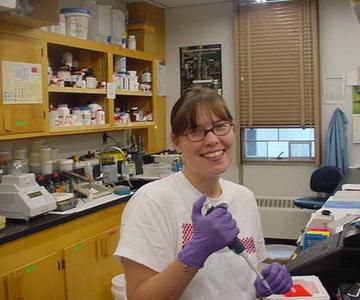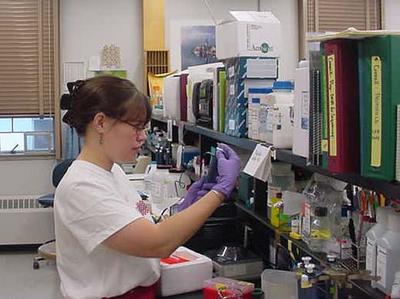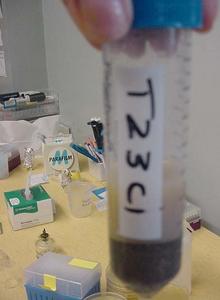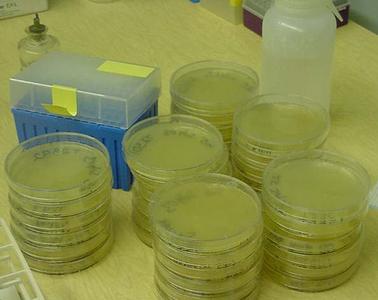25 July, 2003
REMEMBERING WHAT IT IS LIKE TO BE A STUDENT
I've spent the last week visiting Dr. Laurie Connell, my project's PI (principal investigator). Doctor Connell is a researcher at the University of Maine and is the scientist in charge of our yeast project. While we're spending the week getting to know each other and discussing important details about our upcoming adventure, having the opportunity to work in her laboratory is the real reason for the trip. The trip has allowed me to begin to feel comfortable with the project's lab equipment, technology, and procedures before departing for the field.
Dr. Connell's ever so patient lab technician, Melissa Iszard, taught me the fine art of using a pipette and walked me through the steps of isolating yeast DNA from both soil samples and plate cultures, and amplifying DNA using the PCR technique. Learning these techniques has reminded this teacher what it is like to be a student learning a new skill.

The instrument I am using is called a pipette and it allows us to measure and transfer solutions. Why would we choose to use this parcticular instrument instead of a graduated cylinder or a beaker? Why is it important to change the instrumentís tip every time we transfer a new solution?

Here I am extracting DNA from last seasonís Antarctic soil samples. What are some of purposes of isolating NDA?

This tube contains Antarctic soil from last season. The soil is mixed with water and then spread on to a petri dish containing growth media. What do you think is the function of growth media? Each of the eight tubes from which I plated, were collected in different places. What do you think the numbers on the tube mean?

I plated six plates from each of the six soil samples, how many total plates do I have? These plates are now ready to be incubated. Most people think of incubators as being warm, but our plates will actually be put into a refrigerator. Why is this? (Hint: Where did these soil sample come from?)

This picture gives you a good idea about our project. It was taken last season and shows the team collecting soil samples in the Dry Valleys and some of the Antarctic yeast they cultured from the soil. This is what I'll be doing in my upcoming adventure!
Contact the TEA in the field at
.
If you cannot connect through your browser, copy the
TEA's e-mail address in the "To:" line of
your favorite e-mail package.
|
